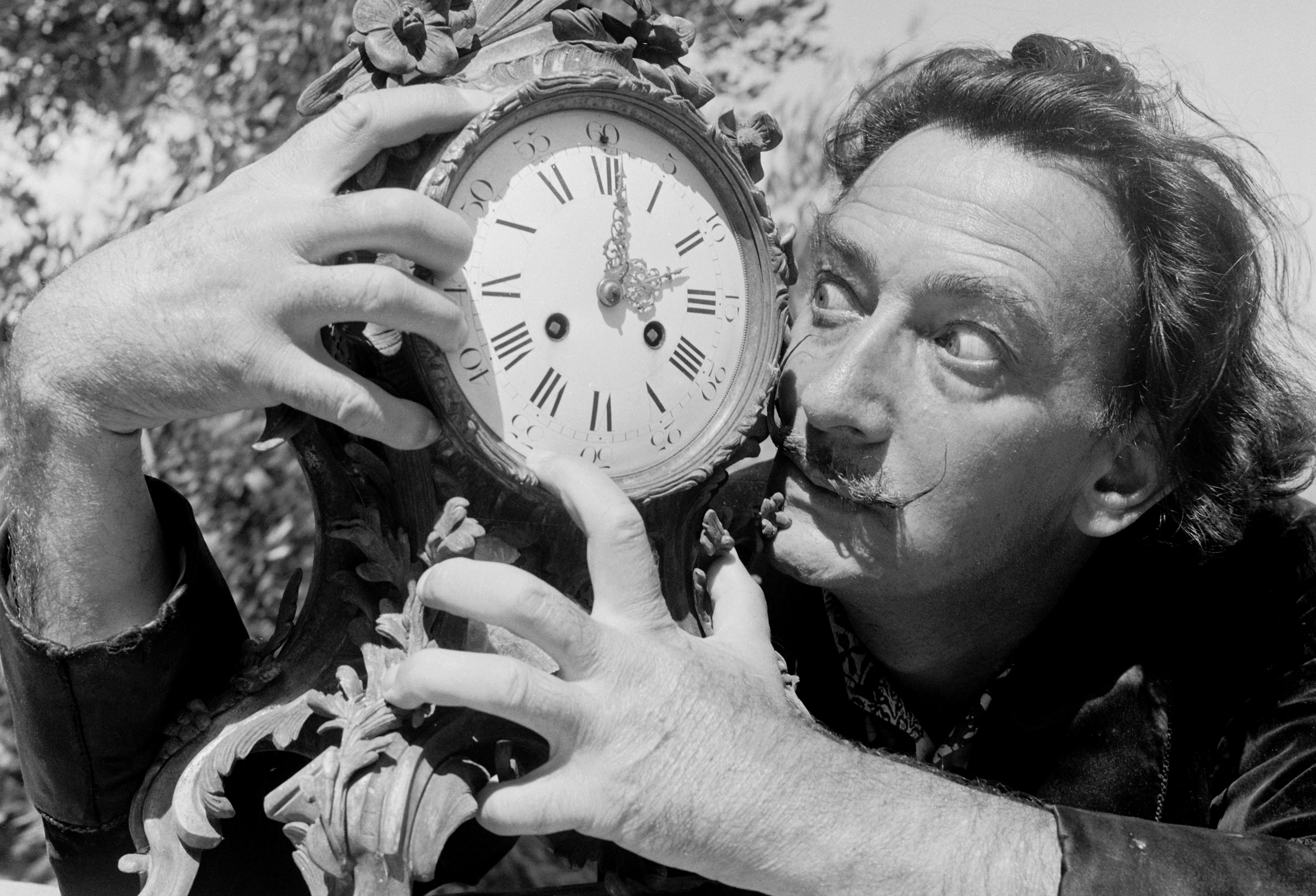
Art Guide
Into the world of Salvador Dali - a guide to iconic symbols in his art
Discover the significance and meaning behind Dali's favorite symbols that feature consistently throughout his work!
By Rachel
Salvador Dali (born in 1904 in Figeures, Spain) is one of the most famous faces in the world, and an equally recognized artist.
His eccentric nature, prolific career and talent for self-promotion made him the father of Surrealism. His sculptures and paintings are exhibited in the most prestigious museums worldwide and part of many coveted private and public collections.
Throughout his surrealist oeuvre, Dali explored the psychoanalytical concept of unconscious and subconscious desires as inspiration, and the illustration of these thoughts automatically when they surface. Surrealism commonly features the juxtaposition of unexpected and bizarre-looking imagery, as seen in Dali’s pieces.
His iconic works need no introduction, but in this article, we’ll be going through some of the major symbols present in Dali’s oeuvre to deepen your understanding of his work.
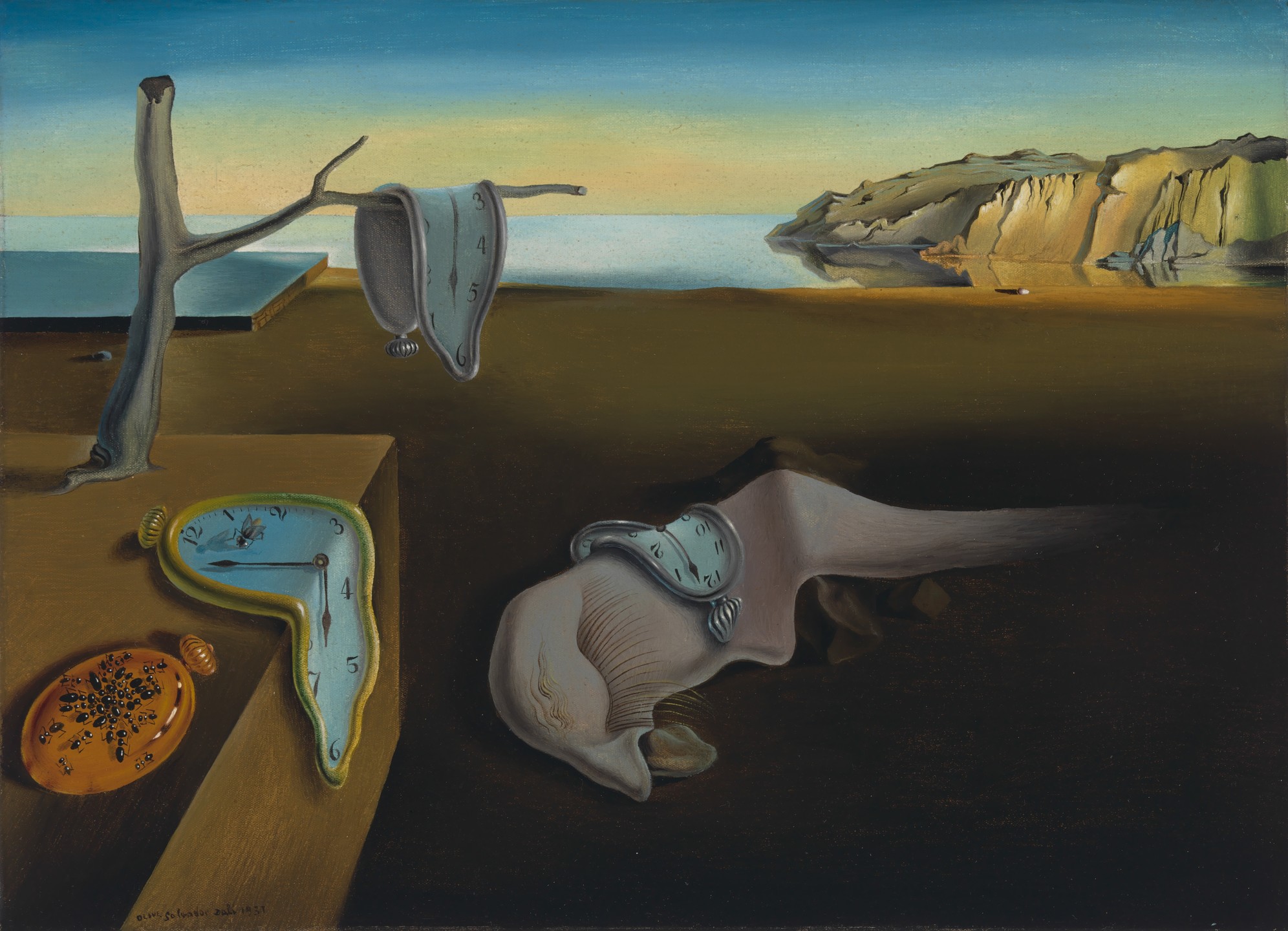
Salvador Dali, The Persistence of Memory, Oil on Canvas, 1931, 9 ½ x 13” (24.1 x 33cm)Displayed in the Museum of Modern Art (MoMA) New York City
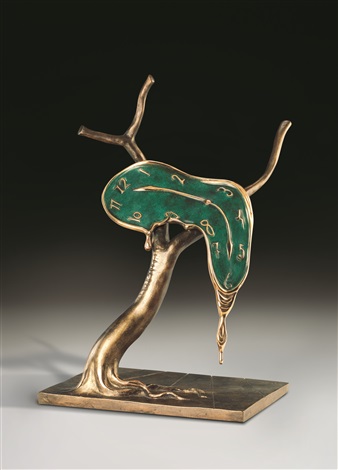
Salvador Dali, Profile of Time (green), Bronze Sculpture, 51 x 35 x 35 cm
The melting clock is the most recognizable Dalinian symbol which was consistently portrayed in his paintings and sculptures throughout his lifetime. The clocks illustrate an important theme in Dalí’s art where Dali turns reality on its head and contrasts it with surrealism. Dalí challenges the physical characteristics/boundaries of a watch which is hard, solid and has a non-bendable outline. In Dali’s clocks, it has now become soft, inaccurate and time bends to individual meanings and perceptions. Time is no longer linear but fluid and relative instead, spilling out of the physical confines of the clock. It is said that the image of the soft clock was inspired by the remains of his meal - a runny Camembert cheese melting in the sun.
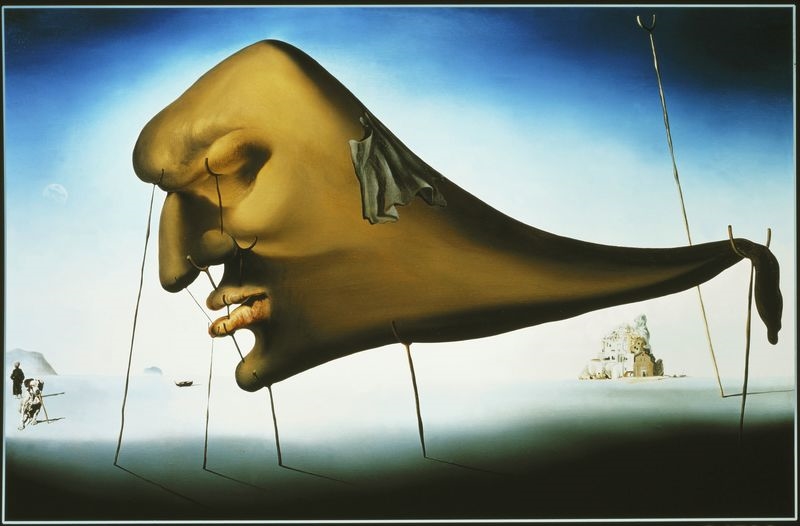
Salvador Dali, Le Sommeil (Sleep), Oil on canvas, 1937, 510 x 780 mm
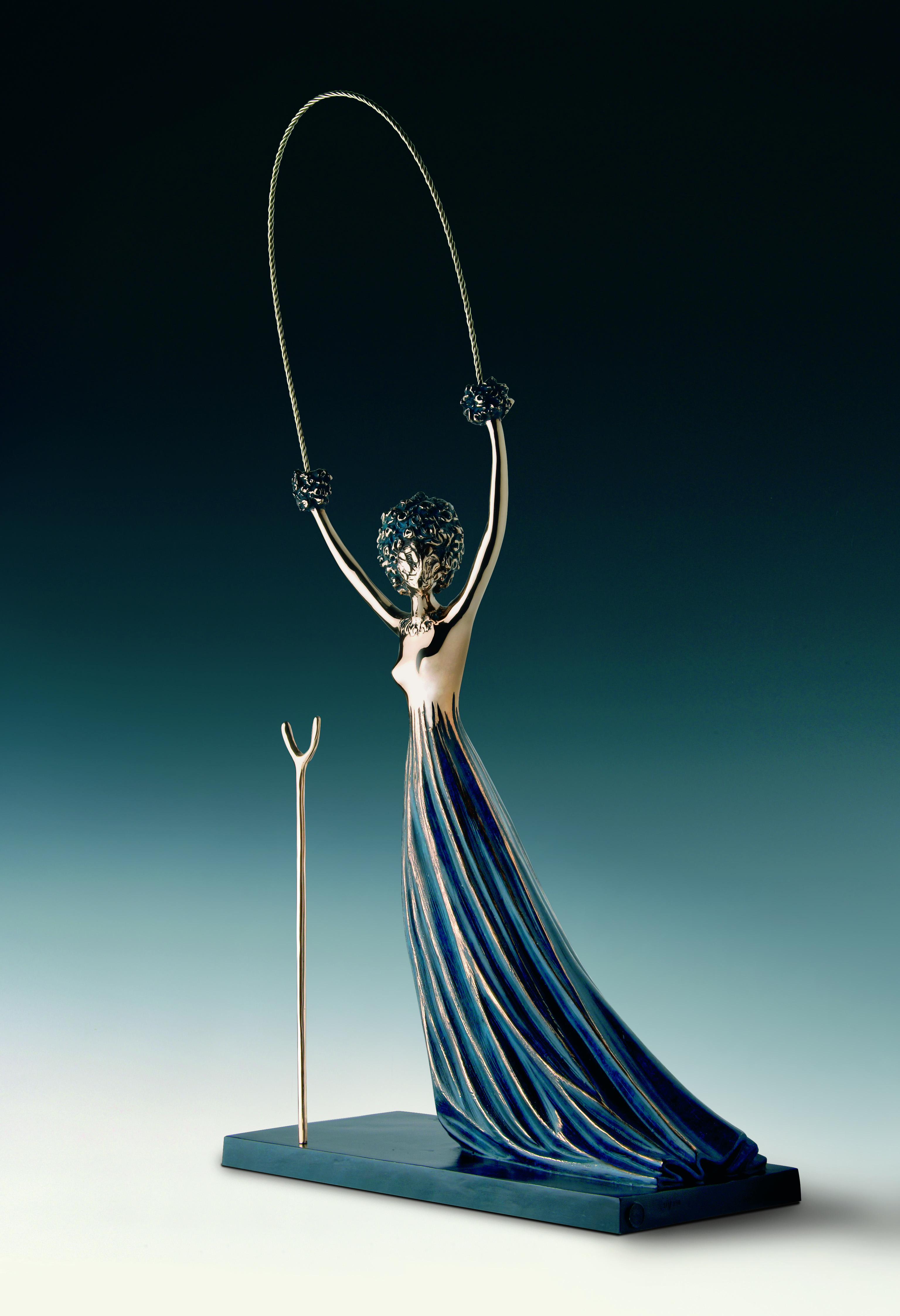
Salvador Dali, Alice in Wonderland, Bronze Sculpture, 90 x 50 cm
Young Dalí discovered a crutch in his father’s attic and instantaneously grew an attachment to it, as the crutch instilled in him a new confidence. It is one of Dali’s most important images and features in many of his works. It is often used to hold up figures, thereby symbolizing their weaknesses. It is a symbol for both physical and spiritual support and stability. The crutch also represents reality and is used as an anchor in the ground of reality in contrast to the world of dreams and surrealism.
In 1969, Salvador Dalí was commissioned to create illustrations for a limited edition of the classic, Alice's Adventures in Wonderland. This bronze sculpture was cast in Dali’s original mold. As seen, the crutch symbol is featured in this art piece as well, symbolizing an anchor in the real world as opposed to the fantasy of Alice’s Wonderland.
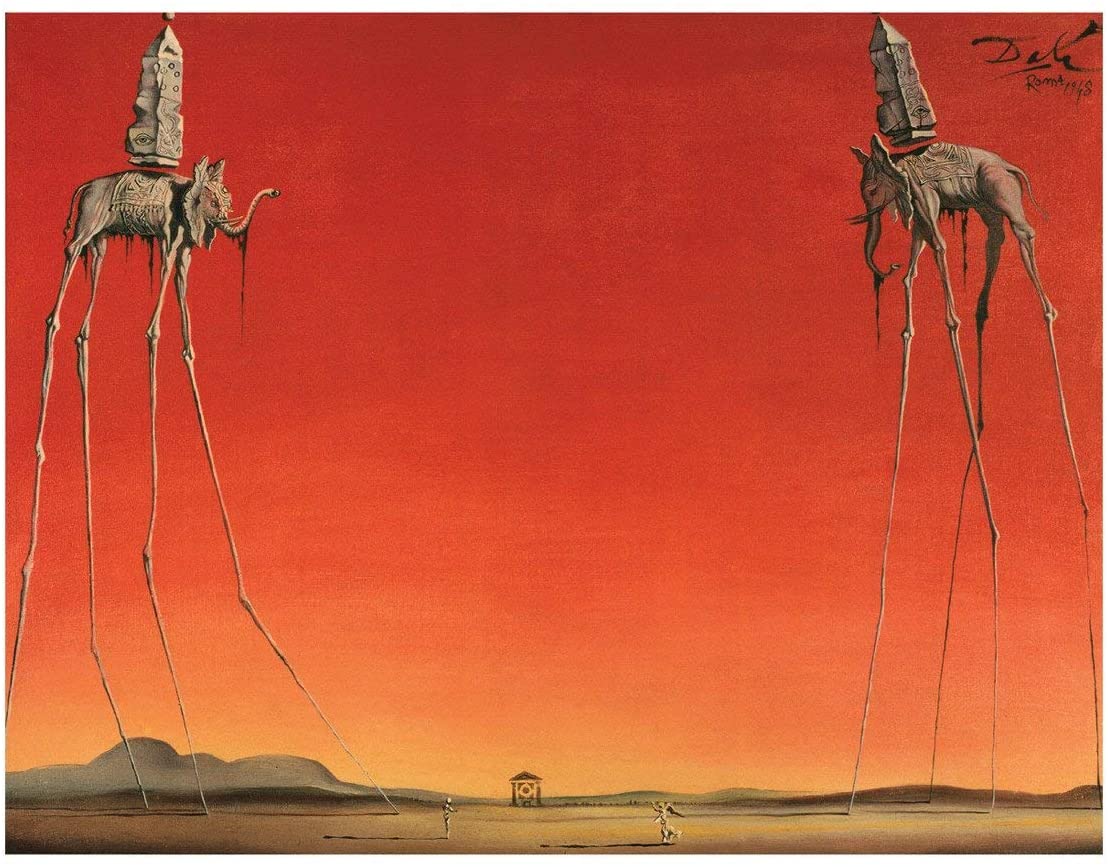
Salvador Dali, Les Elephants, Oil on Canvas, 1948
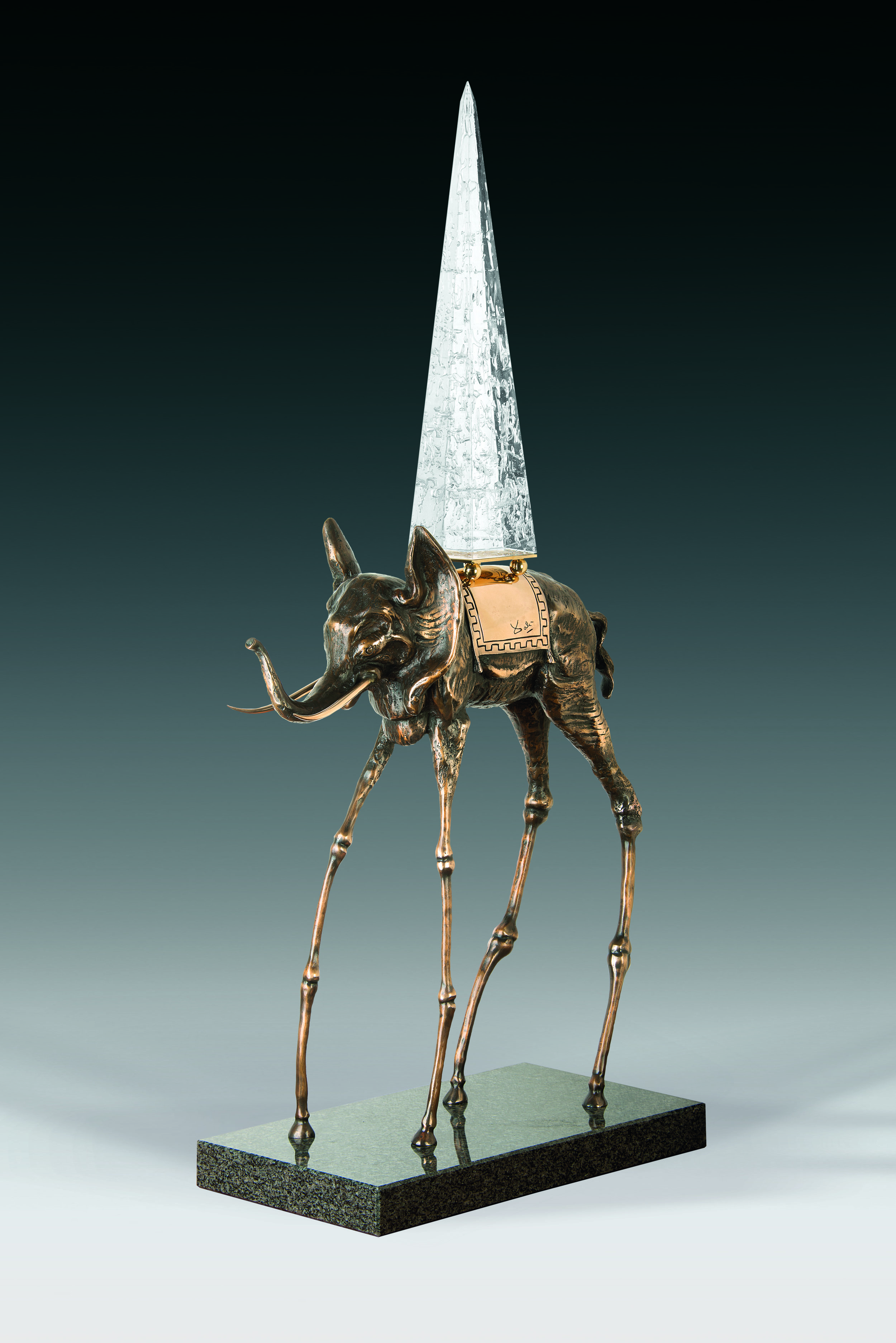
Salvador Dali, Space Elephant, Bronze Sculpture, 94 cm
Dalí’s elephants are usually portrayed with multijointed lanky legs of desire, carrying objects on their backs. Such objects are often obelisks, which are symbols of power and domination with phallic overtones. These surreal creatures are distortions in space – contrasting the heavy body and the weights on their backs supported by the long spindly legs, thereby showing weightlessness. As such, these elephants represent the future and are a symbol of strength. When closely observed, you may notice that the elephant’s feet are always rooted to the ground, though the legs stretch upwards to the sky. This represents that despite the physical limitation of men to the earth’s boundaries by gravity, they are always reaching for greater heights.
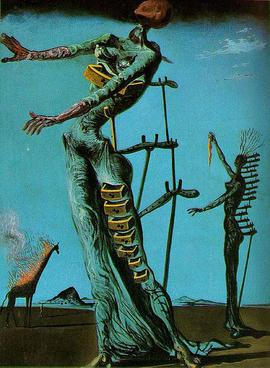
Salvador Dali, The Burning Giraffe, Oil on panel, 1937, 35 x 27 cm (13.8” x 10.6”)
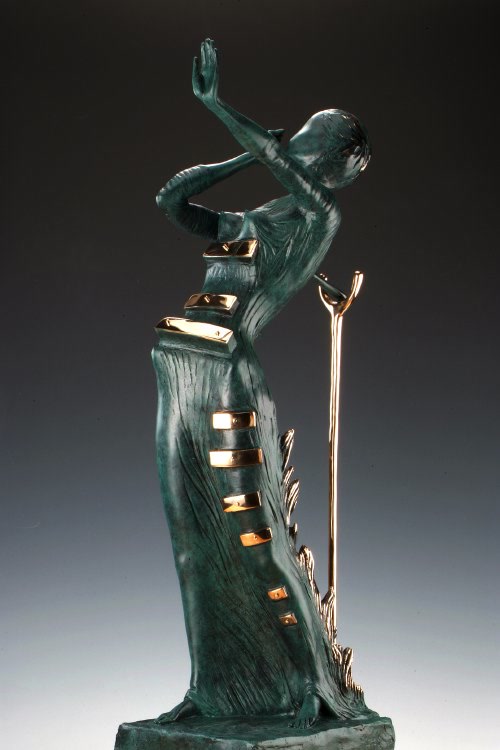
Salvador Dali, Woman Aflame, Bronze Sculpture, 84 cm
Human bodies that open with drawers are found repeatedly in Dalí’s artwork. Influenced by Freud’s theories of the concealed sexuality of women and the ‘idea drawer’, they symbolize the mystery of hidden secrets, sexual desires, sins and complexes. Dalí portrays many of the drawers to be slightly ajar, indicating that their secrets are known and no longer to be feared.
Discover more of Dali's stunning artworks here!
His eccentric nature, prolific career and talent for self-promotion made him the father of Surrealism. His sculptures and paintings are exhibited in the most prestigious museums worldwide and part of many coveted private and public collections.
Throughout his surrealist oeuvre, Dali explored the psychoanalytical concept of unconscious and subconscious desires as inspiration, and the illustration of these thoughts automatically when they surface. Surrealism commonly features the juxtaposition of unexpected and bizarre-looking imagery, as seen in Dali’s pieces.
His iconic works need no introduction, but in this article, we’ll be going through some of the major symbols present in Dali’s oeuvre to deepen your understanding of his work.
1. Soft Watches

Salvador Dali, The Persistence of Memory, Oil on Canvas, 1931, 9 ½ x 13” (24.1 x 33cm)Displayed in the Museum of Modern Art (MoMA) New York City

Salvador Dali, Profile of Time (green), Bronze Sculpture, 51 x 35 x 35 cm
The melting clock is the most recognizable Dalinian symbol which was consistently portrayed in his paintings and sculptures throughout his lifetime. The clocks illustrate an important theme in Dalí’s art where Dali turns reality on its head and contrasts it with surrealism. Dalí challenges the physical characteristics/boundaries of a watch which is hard, solid and has a non-bendable outline. In Dali’s clocks, it has now become soft, inaccurate and time bends to individual meanings and perceptions. Time is no longer linear but fluid and relative instead, spilling out of the physical confines of the clock. It is said that the image of the soft clock was inspired by the remains of his meal - a runny Camembert cheese melting in the sun.
2. Crutches

Salvador Dali, Le Sommeil (Sleep), Oil on canvas, 1937, 510 x 780 mm

Salvador Dali, Alice in Wonderland, Bronze Sculpture, 90 x 50 cm
Young Dalí discovered a crutch in his father’s attic and instantaneously grew an attachment to it, as the crutch instilled in him a new confidence. It is one of Dali’s most important images and features in many of his works. It is often used to hold up figures, thereby symbolizing their weaknesses. It is a symbol for both physical and spiritual support and stability. The crutch also represents reality and is used as an anchor in the ground of reality in contrast to the world of dreams and surrealism.
In 1969, Salvador Dalí was commissioned to create illustrations for a limited edition of the classic, Alice's Adventures in Wonderland. This bronze sculpture was cast in Dali’s original mold. As seen, the crutch symbol is featured in this art piece as well, symbolizing an anchor in the real world as opposed to the fantasy of Alice’s Wonderland.
3. Elephants

Salvador Dali, Les Elephants, Oil on Canvas, 1948

Salvador Dali, Space Elephant, Bronze Sculpture, 94 cm
Dalí’s elephants are usually portrayed with multijointed lanky legs of desire, carrying objects on their backs. Such objects are often obelisks, which are symbols of power and domination with phallic overtones. These surreal creatures are distortions in space – contrasting the heavy body and the weights on their backs supported by the long spindly legs, thereby showing weightlessness. As such, these elephants represent the future and are a symbol of strength. When closely observed, you may notice that the elephant’s feet are always rooted to the ground, though the legs stretch upwards to the sky. This represents that despite the physical limitation of men to the earth’s boundaries by gravity, they are always reaching for greater heights.
4. Drawers

Salvador Dali, The Burning Giraffe, Oil on panel, 1937, 35 x 27 cm (13.8” x 10.6”)

Salvador Dali, Woman Aflame, Bronze Sculpture, 84 cm
Human bodies that open with drawers are found repeatedly in Dalí’s artwork. Influenced by Freud’s theories of the concealed sexuality of women and the ‘idea drawer’, they symbolize the mystery of hidden secrets, sexual desires, sins and complexes. Dalí portrays many of the drawers to be slightly ajar, indicating that their secrets are known and no longer to be feared.
Discover more of Dali's stunning artworks here!



.jpg)